
The gastropod shell is part of the body of a gastropod or snail, a kind of mollusc. The shell is an exoskeleton, which protects from predators, mechanical damage, and dehydration, but also serves for muscle attachment and calcium storage. Some gastropods appear shell-less (slugs) but may have a remnant within the mantle, or in some cases the shell is reduced such that the body cannot be retracted within it (semi-slug). Some snails also possess an operculum that seals the opening of the shell, known as the aperture, which provides further protection. The study of mollusc shells is known as conchology. The biological study of gastropods, and other molluscs in general, is malacology. Shell morphology terms vary by species group.
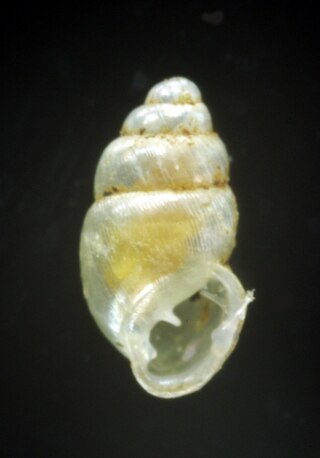
Carychiinae is a taxonomic subfamily of minute air-breathing land snails, terrestrial pulmonate gastropod mollusks.

Zospeum is a genus of air-breathing land snails, terrestrial pulmonate gastropod mollusks in the family Ellobiidae, the salt marsh snails.

Carychium is a genus of very small air-breathing land snails, terrestrial pulmonate gastropod mollusks in the family Ellobiidae.
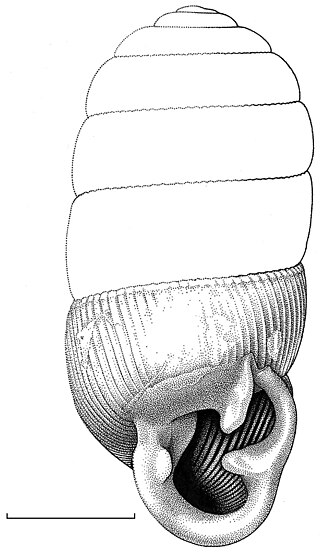
Gulella systemanaturae is a species of minute air-breathing land snail, a terrestrial pulmonate gastropod mollusk in the family Streptaxidae.

Tectus mauritianus, common name the Mauritius top shell, is a species of sea snail, a marine gastropod mollusk in the family Turbinidae, the turban snails.

Bostryx chusgonensis is a species of tropical air-breathing land snail, a pulmonate gastropod mollusk in the family Bulimulidae.

Leptacme cuongi is a species of air-breathing land snail, a terrestrial gastropod mollusk in the family Clausiliidae, the door snails.

Oospira duci is a species of air-breathing land snail, a terrestrial gastropod mollusk in the family Clausiliidae, the door snails.
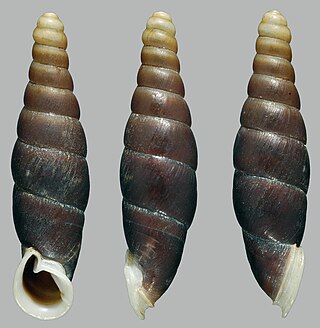
Atractophaedusa smithi is a species of air-breathing land snail, a terrestrial gastropod mollusk in the family Clausiliidae, the door snails.
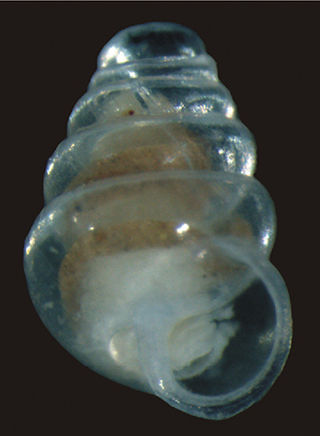
Zospeum tholussum or the domed land snail, is a cave-dwelling species of air-breathing land snails in the family Ellobiidae. It is a very small species, with a shell height of less than 2 mm (0.08 in) and a shell width of around 1 mm (0.04 in). Z. tholussum individuals are completely blind and possess translucent shells with five to six whorls. The second whorl of their shells has a characteristic dome-like shape. They are also extremely slow-moving and may depend on passive transportation through running water or larger animals for dispersal.
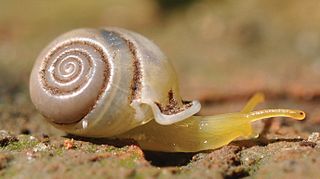
Perrottetia aquilonaris is a species of air-breathing land snail, a terrestrial pulmonate gastropod mollusc in the family Streptaxidae.
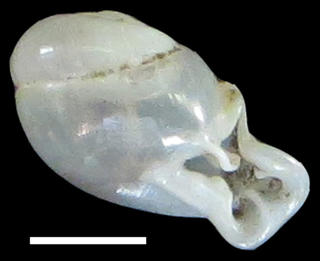
Perrottetia hongthinhae is a species of air-breathing land snail, a terrestrial pulmonate gastropod mollusc in the family Streptaxidae.

Zospeum percostulatum is a species of air-breathing land snail, a terrestrial pulmonate gastropod mollusk in the family Ellobiidae, the salt marsh snails. This species is endemic to Asturias, Spain. It is known from several limestone caves near Llanes. Though there were a few old records of Zospeum in Asturias, dubiously identified as Z. suarezi and Z. schaufussi, Zospeum percostulatum is the first species described for this autonomous community.
Koreozospeum is a genus of small air-breathing land snails. It contains a single species, Koreozospeum nodongense.
Zospeum zaldivarae is a cave-dwelling species of air-breathing land snail.
Zospeum robustum is a cave-dwelling species of air-breathing land snails.
Zospeum bucculentum is a cave-dwelling species of air-breathing land snails.
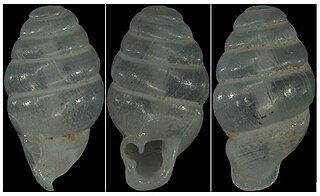
Laoennea renouardi is one of two species in the genus Laoennea of the Asian terrestrial snail family Diapheridae.
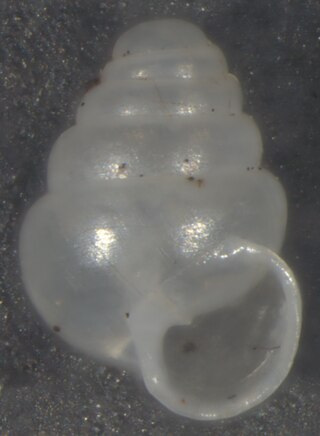
Zospeum manitaense is a cave-dwelling species of air-breathing land snail. Some individuals in this genus were previously described under the name of Zospeum amoenum, Zospeum isselianum or Zospeum pretneri.















